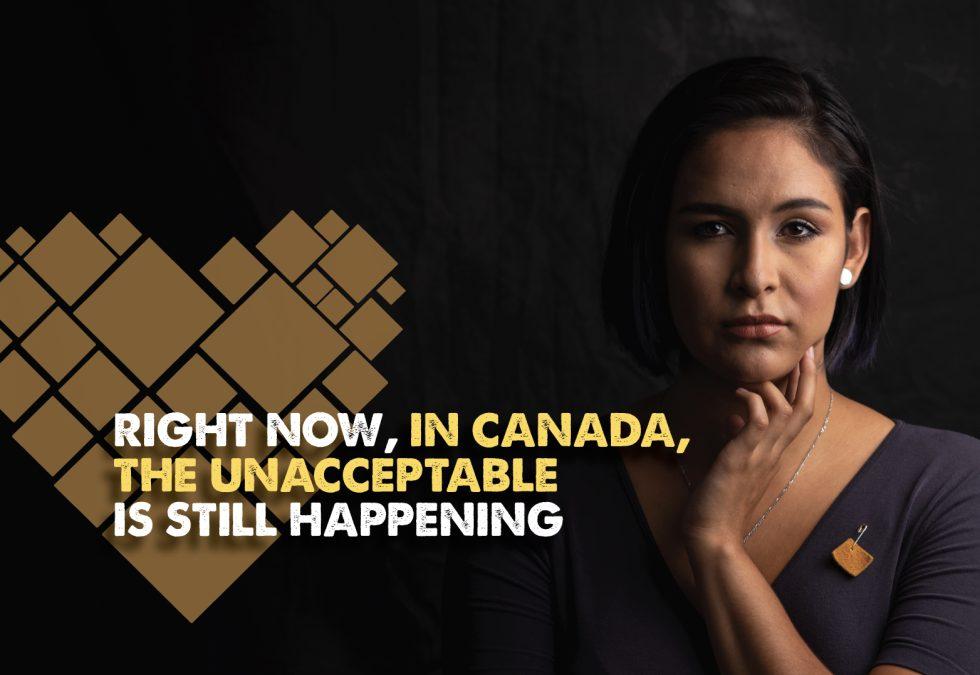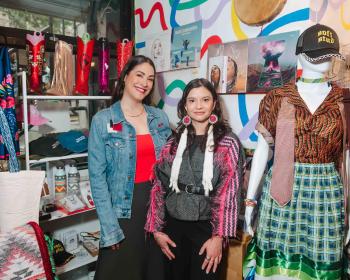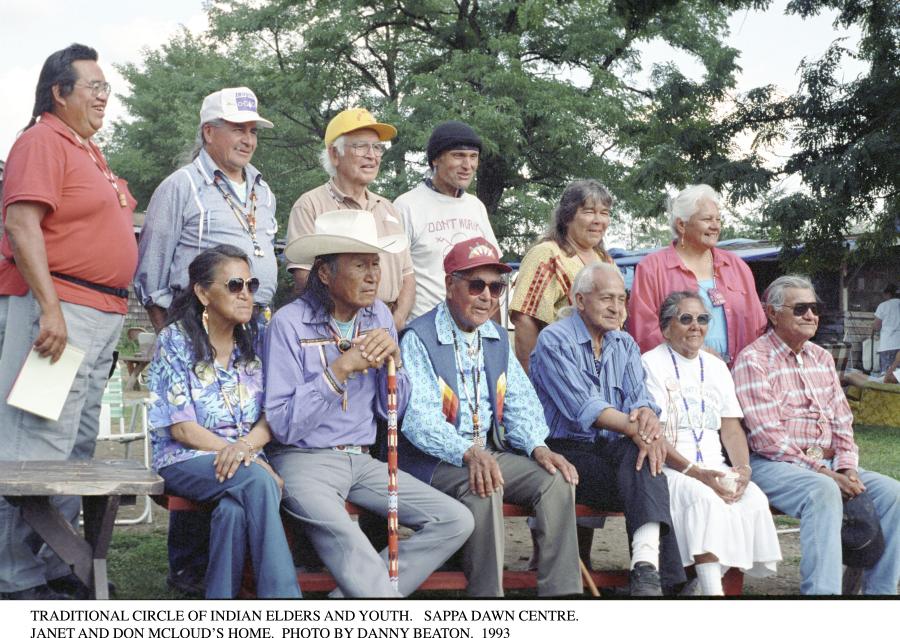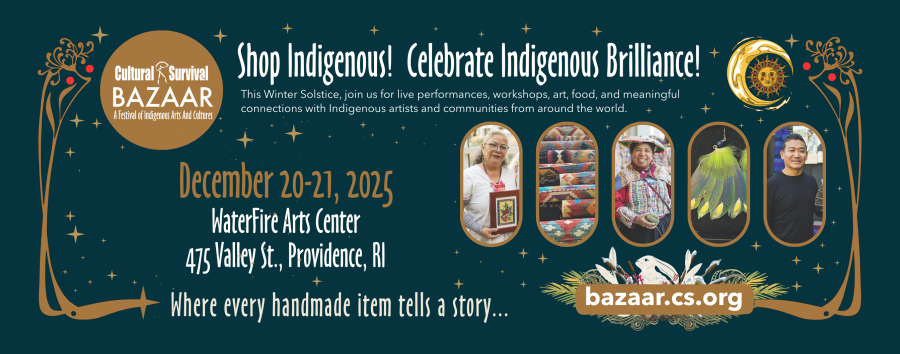
By Tia-Alexi Roberts (Narragansett, CS Staff)
As awareness around gender-based violence continues to grow, First Nations across Canada are working with schools and other nonprofit organizations to eliminate violence against Indigenous women, girls, and Two-Spirits, who are disproportionately affected by violence in Canada and many other places around the world. Indigenous women make up just four percent of the female population in Canada, but Amnesty International reports that 16 percent of all women murdered there between 1980 and 2012 were Indigenous—a homicide rate roughly 4.5 times higher than the general population. According to Statistics Canada, homicide rates for Indigenous women and girls are even worse—up to six times higher than for their non-Indigenous counterparts. In addition, access to justice continues to be a problem for survivors of homicide victims. Statistics Canada reports that law enforcement is 50 percent less likely to recommend a charge of first-degree murder when the victim is Indigenous vs. non-Indigenous.
Many organizations are working hard to change the narratives and stop gender-based violence. The Moosehide Campaign, an Indigenous-led nonprofit organization based in British Columbia, aims to engage men and boys in speaking out to put an end to gender-based violence against Indigenous Peoples. The movement has spread nationwide, capturing the attention and involvement of Indigenous and non-Indigenous people alike. Since the Moosehide Campaign was launched, men from around the world have committed to ending violence by purchasing moosehide pins and leading Moosehide Campaign Day events. Cultural Survival spoke with Raven Lacerte (Lake Babine Nation), co-founder of the Moosehide Campaign.
Cultural Survival: Please introduce yourself and tell us which Indigenous Nation you belong to.
Raven Lacerte: My name is Raven Lacerte. I am Carrier, so I am a member of the Lake Babine Nation located in central British Columbia, Canada. I am part of the Bear Clan. We get our clan membership passed down through our mums, so I am part of the Grizzly Bear house. I am [also] a mom; I have two babies, Cedar and Chas. And I am the co-founder of Moosehide Campaign.
CS: In what ways has gender-based violence impacted your community?
RL: My community is right where the Highway of Tears is (which is also called Highway 16) because dozens of women have gone missing or have been found murdered along that stretch of highway. It's an infamous highway that is very unsafe for Indigenous women. Our family is connected to some of those precious ones who have lost their lives. For me, as a visibly Indigenous woman from those communities where the highway cuts right through, there has always been a part of the reality that I had to live through and understand the Murdered and Missing Indigenous Women movement. [Officially] we have over 1,200 Murdered and Missing Indigenous Women in Canada, [but] there's a national organization called the Native Women’s Association of Canada that knows that that number is greater than 4,000. So there’s a real issue in this country.
CS: What Inspired the Moosehead Campaign?
RL: I want better for our people—less violence of all forms and more safety, love, and healing. Violence is all over the place; you can't really get away from it. And if it's not something that we have not experienced ourselves, it’s something that somebody we know has experienced. We started the Moosehide Campaign in 2011. The idea came to us on a hunting trip in our home community. We are hunters, and we hunt for moose every year, which feeds us through the winter. One morning, off the highway, me and my dad were on a hunting trip and we were blessed with a moose. We got this idea to tan the moosehide, cut it up into little squares, and ask people to wear it as an everyday commitment and reminder of who and how we want to be.
CS: Tell us about the role of the Moosehide Campaign in supporting the Missing and Murdered Indigenous Women (MMIW) movement.
RL: [It] is an open invitation where we are calling people in instead of calling people out. This is supposed to be a place that is free of blame and shame and more of an understanding that there's an issue in this country with violence that is happening towards women and children every single day. It doesn't have to be that way. Somehow, along our journey, we have lost that way of honoring, respecting, and protecting the women and children in our lives. Women are life-givers, so how can we be hurting them like that? They are so precious and we need them so badly. So we wanted to do something to help.
My sisters and I cut up the first 25,000 squares of the moosehide and handwrote information cards about what we were trying to do and just started handing them out and talking about it. I was 16 when we first got this idea. We didn't have any real idea of what would come of it. Soon enough, people saw it and wanted to be a part of it. They wanted to wear it and share it with their families, kids, co-workers, and parents. It started to spread, and since 2011 we’ve handed out more than five million pins. We made a forever promise to never charge for the moosehide pins because it's medicine and it is important for us to not charge. We want it to be easy and accessible for people. That has come at a cost for us to be able to offer more than five million of these. It costs more than $1 per pin from producing them to shipping them to someone's door, so it's quite an expensive endeavor, but is so important.
CS: How has the Moosehide Campaign affected your community?
RL: We have thousands and thousands of stories where people have shared how the Moosehide Campaign has impacted their lives. We are creating these spaces to have these conversations that a lot of times we don't have. Violence thrives in shadows. It's one of those things that we don't talk about, that goes unreported, and people act like it is not happening—[in fact,] 71% goes unreported [due to] fear, manipulation...there are so many reasons why. So this is an opportunity for us to say, ‘We are standing up. We are making a commitment to ourselves and to each other that we don't want violence in our lives.’ This is our reminder every day that we wake up and put on our pins. It serves as a reminder of how we want to be. People come back and say, ‘I wear this every day, and it is really helping me stay on track to be the person that I want to be. If I come into a moment where I might have done violence in the past, this thing helps me to not do it.’ Or, ‘I never knew that this was a thing in my family and now l know because someone asked me about what this pin was.’ Or, ‘We were able to get the support we needed.’ All across the board, it's changing how people interact with each other and how they show up in the world.
CS: Are there any significant initiatives or projects that have positively influenced your community?
RL: The moosehide pins are the everyday reminder and everyday conversation starter. People bring these things because they are free and they can order as many as they want. You can order as many as you want, from 5,000 to 15,000; it doesn't matter. We also have Moosehide Campaign Day, which is a big ceremony where we come together for a day to fast. We have no food or water from sunup to sundown, just for one day. We come from a fasting family, so my dad does four days of no food, no water. We thought that if we offered an opportunity for an Indigenous-led ceremony for all Canadians that this could be something that deepens our commitment and our understanding of this issue. We do it virtually so people can participate around the world. It's a chance to learn more about the issue and how we could be a part of positive change. We have speakers, we have workshops, and then at the end of the day, we break our fast together and have a big feast.
CS: What are some critical, but overlooked, issues regarding gender-based violence in your community?
RL: I think that it is just a chronically underfunded space. People are always fighting so hard for resources. People don't know the pervasiveness of this issue, they don't know that it may be happening in the backyard of their own neighbor. Since it's such an unreported issue, people don't really understand the gravity of the violence that is happening toward women and children.
This is not just happening to Indigenous women, either. Gender-based violence impacts everyone. There's also a need for men and boys to be a part of that space. It’s been run and supported by women for so long, and that's how the campaign got started. My dad went to a conference in Vancouver about ending violence towards women and children, and out of 285 people, only 4 of them were men. So my dad is one of these four men who were looking around the room like, where are all the guys? Why aren't they here? We need everyone to be a part of this together in order to move forward and have any real change. That was part of the conversation that led to starting this campaign.
CS: What strategies do you believe could address and resolve these issues?
RL: I can say that the Moosehide Campaign is working in these spaces because it's raising awareness and providing the tools for people to enter into this space in a good way. It provides an opportunity to learn how to talk about it in a good way and to know what to do in a situation where someone discloses what's going on for them. The pin offers them that tool and piece to talk about it. I can't tell you how many times someone sees me wearing this, and they say, ‘Hey, what is that?’ And then I say, ‘It’s a moosehide pin. We are part of the Moosehide campaign. We are standing up against violence towards women and children.’ Then they say, ‘That happened to me my whole life,’ or ‘That's currently happening to me.’ People are desperate to have a place to be able to talk about this kind of stuff. We have some resources on our site that people can turn to for support if they need to know what to do when someone comes to them and discloses this information. I would also say that people should learn more about their local shelters and learn more about what the issue looks like in their community.
CS: How does your community raise awareness and educate its members about preventing gender-based violence?
RL: We do a lot of awareness about Missing and Murdered Indigenous Women in Canada. We have the National Day for MMIW, and we have Red Dress Day, which is an initiative that was born out of BC [as] a representation of the women who have gone missing or who have been found. People will put on a red dress or hang one from the trees on the Highway of Tears, or they will put it in their front yard or on their doors. A lot of people are starting men's circles and healing circles. Lots of people will use the Moosehide Campaign to start a men's healing circle or bring in workshops about how communities can activate.
We just released a report for the National Inquiry for MMIW, and there were 231 calls for justice that came out of commissioners going across the country and hearing stories from families of Murdered and Missing Indigenous Women or survivors of gender-based violence. [They] came out with 231 recommendations on how people can engage in this space in a meaningful way. So, people are looking at these initiatives as a roadmap about what they can do, to learn more and take action.
CS: In your opinion, what more can be done at a societal or governmental level to support survivors of gender-based violence within Indigenous communities?
RL: People are just starting to open their eyes to what's going on. As a mom, I understand it now at a completely different level than I did at 16. I want my sisters, my mom, and the community to all have the chance to live a life free of violence. When people feel there is an issue that impacts them personally, then they feel more activated. The Moosehide Campaign tries to be that more accessible, tangible step for them to use in their own spaces. Even though not every part of Canada has moose, people can still take it and make it their own where it makes sense to them.
There are a few different roadmaps that people could use for calls to action. There are a lot of different books to read and ways to learn about gender-based violence. It doesn't have to be our campaign, but there are a lot of gender-based violence organizations and initiatives that exist that want people to have those tools. I think people could do more research in their communities and look at those calls to action.
CS: Tell us more about the Moosehide Campaign Day event and its significance.
RL: Moosehide Campaign Day is one of those spaces where people can come together and leave our titles and egos at the door. We just come into ceremony with this collective desire for ending violence towards women and children, so much so that we are willing to go without food and water for the day to deepen our commitment. We have incredible speakers who share their stories. One of the keynote speakers from last year, Brandi Morin, was able to share her story about almost becoming a murdered Indigenous woman. She escaped and has been able to share and tell her story. Now she’s a journalist sharing other people’s stories of [Missing and Murdered] Indigenous women and using her voice for a platform. Then we have a big feast at the end of the day. We had half a million people registered last year.
This year, it is on May 16—you just register on our website. For the non-Indigenous people who are looking to participate with us, it's a chance for them to be a part of an Indigenous ceremony, which is really hitting that peace and reconciliation. Here in Canada, lots of people don't have the chance to speak with an Indigenous person. People could live on the opposite side of the road of a reserve and never speak to an Indigenous person.
CS: Do you think that this kind of discrimination contributes to gender-based violence against Indigenous Peoples?
RL: I think there are a lot of factors that play into it. I think that it is part of it for sure, especially the violence towards Indigenous women. Society sees Indigenous Women as less than human, so much so that people are willing to hurt them. I also believe that people in society are making huge strides toward unlearning these discriminatory behaviors. The school system very deliberately did not share information about Indigenous Peoples. They made it seem like we were a thing of the past, which was the intention of eradicating Indigenous Peoples in general. Now that we are being taught these things in schools, people are opening their eyes to these issues and things are beginning to shift.
Photo courtesy of Moosehide Campaign



